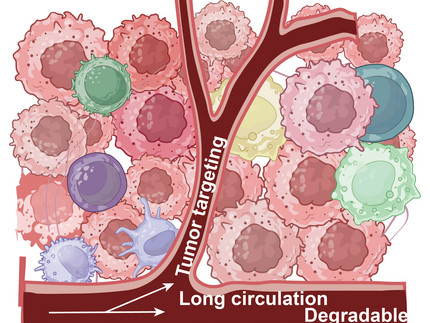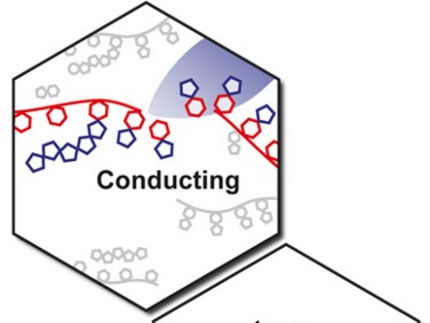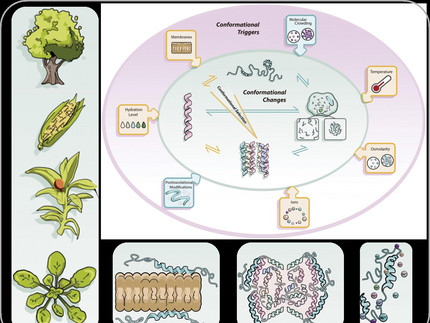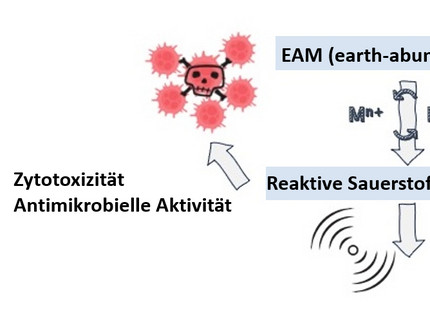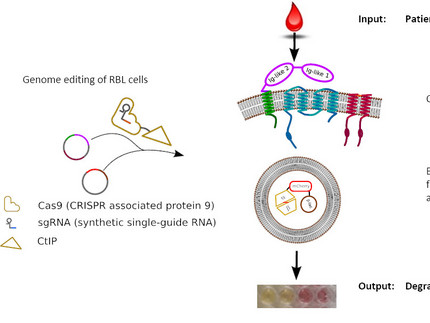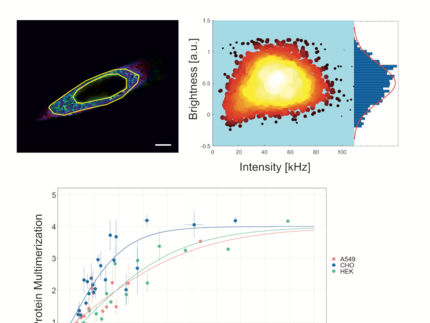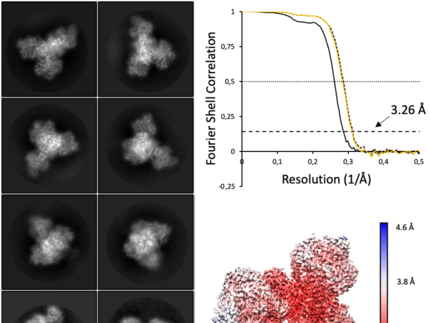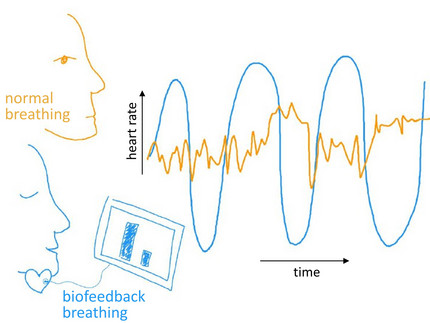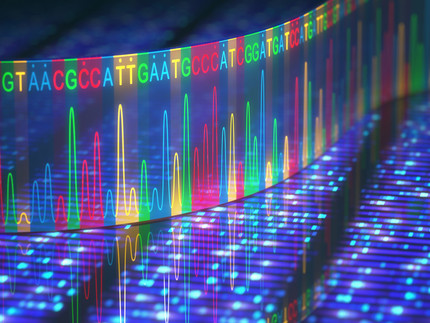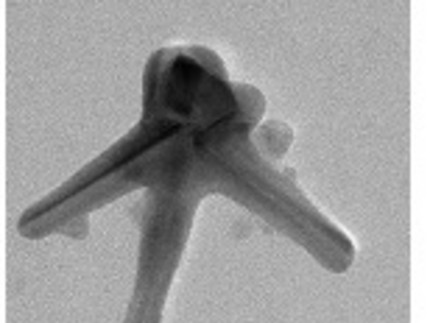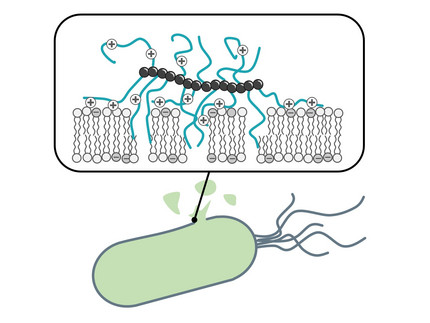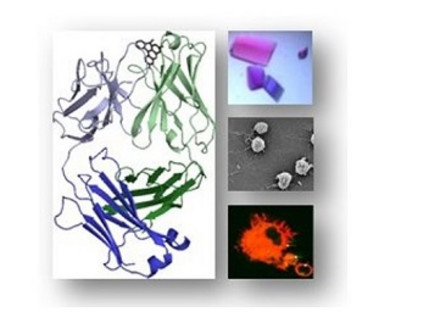Next Generation Protein Therapeutics
Dr. Ulrich Glebe and his team Biohybrid Materials at the University of Potsdam are working on developing methods to stabilize therapeutic proteins. Their high specificity and biocompatibility are advantages of protein therapeutics. However, foreign proteins are quickly recognized and removed from the body by the immune system.
Download Transfer Offer 25-08 (PDF, 644 KB)
Innovative materials for biotechnology and electronics
The Applied Photochemistry and 3D Bioelectronics working group, led by Dr Johannes Gurke, is researching new ways to manufacture bioelectronic devices. Their work ranges from chemical material development to the integration of materials into initial device prototypes. The aim is to develop flexible and biocompatible materials and devices that are suitable for interaction with biological tissue.
A better understanding of the brain is crucial to improving treatment for people with neurological disorders such as epilepsy. However, current technologies for measuring neural activity are reaching their limits, as the methods in use are rigid and inflexible and make it difficult to produce complex three-dimensional structures.
To overcome these limitations, the working group is focusing on the advantages of modern manufacturing techniques such as 3D printing. Although 3D printing already offers many possibilities for the precise manufacture of complex structures, its potential in this area has not yet been fully exploited. Using high-precision stereolithography, conductive polymers are to be produced specifically by means of light. These polymers are integrated into a special photoresin that is highly conductive, biocompatible and flexible and is optimised for modern 3D printing systems. Building on this, both conductive and insulating areas are to be created within a single material - a crucial prerequisite for the development of flexible, functionally electrodes in order to be able to decide on suitable measures quickly.
Download Transfer Offer 25-05 (PDF, 610 KB)
Cyanobacteria and their versatile potential
Prof. Elke Dittmann is head of the Microbiology Research Group at the University of Potsdam and specializes in the studies of cyanobacteria. These photosynthetically active bacteria are important primary producers in many aquatic ecosystems and serve as food source for many organisms in the food chain. Under certain conditions, cyanobacteria can multiply rapidly. During this so-called algae bloom, a variety of secondary metabolites are produced, which can have toxic effects on the environment and other living organisms. Understanding these secondary metabolites and their production contributes to water protection and public health. This knowledge can be used to develop concepts for environmental diagnostics and the management of algae blooms. At the same time, cyanobacteria have great potential as production hosts and catalysts in climate-neutral green biotechnology.
Download Transfer Offer 25-04 (PDF, 616 KB)
Mechanisms of Biomolecule Stabilization by Intrinsically Disordered Proteins (IDPs) Under Dehydration Stress
Late Embryogenesis Abundant (LEA) proteins are essential for the tolerance of plants against dehydration-related stress and act as stabilizers for proteins, membranes, and nucleic acids in vitro. Dr. Anja Thalhammer’s research aims to understand how the dynamic structural properties of LEA proteins orchestrate their protective effects, with a special focus on interactions with metabolites such as sugars. This knowledge is crucial for the development of stress-tolerant plants. Beyond their natural role in plants, LEA proteins hold significant promise as excipients in pharmaceutical formulations. Their ability to safeguard biomolecules under harsh conditions like dehydration or freezing makes them highly valuable for stabilizing drugs and other biological products.
Download Transfer Offer 25-03 (PDF, 632 KB)
Earth-abundant metals for applications in medicine and catalysis
The research group of Prof. Nora Kulak develops metal-based compounds for applications in medicine and catalysis. In comparison to organic substances, metal complexes are structurally more versatile and have a rich redox chemistry. The focus is on earth-abundant metals rather than precious metals for several reasons: higher availability, lower price, and their production from ores has a lower CO2 footprint.
Download Transfer Offer 24-01 (PDF, 603 KB)
Development of a cell-based allergy test
Allergies are on the rise, demanding potent diagnostic tools for screening of allergen-specific IgE antibodies in human blood samples. While skin-prick tests and serum IgE analysis are routinely performed, positive tests often poorly correlate with clinical symptoms. Consequently, functional cell-based assays are desperately needed. The rat basophil leukemia (RBL) 2H3 cell line constitutes an interesting in vitro system to study IgE-dependent degranulation eliminating the need to isolate mast cells from blood and tissue samples.
Download Transfer Offer 22-02 (PDF, 656 KB)
Ultra sensitive and robust POCT approaches for diagnostics
Prof. Dr. Frank Bier’s research group of Molecular Bioanalytics and Bioelectronics focuses on medical diagnostics, especially the development of point-of-care testings (POCT), using different molecular biological and biochemical techniques. Currently, the work focuses on various assay developments for the detection of COVID-19. The main motivation is to design smart and innovative POCT suitable for at-home-testing. One of the research projects investigates the detection of viral RNA to enable an early and reliable diagnosis of infections with SARS-CoV-2 and other pathogens. For a simple and sensitive detection a test strip assay format is combined with the much noticed technique of Loop-Mediated Isothermal Amplification (LAMP) of nucleic acids. For the application oriented research projects, the group collaborates with numerous research institutions as well as companies and industries mainly in Brandenburg-Berlin area.
Download Transfer Offer 21-09 (PDF, 3,95 MB)
Quantifying protein-protein interactions in living cells
The group of Prof. Dr. Salvo Chiantia, Professor for Physical Biochemistry at the University of Potsdam, focuses on the application of quantitative fluorescence microscopy for the study of inter-molecular interactions. Such approaches (e.g., fluorescence correlation spectroscopy, FCS) belong to the family of fluorescence fluctuation techniques, i.e. minimally invasive methods that allow the characterization of fluorescently labeled biomolecules directly in living cells or in vitro. The analysis provides direct quantification of diffusion dynamics, protein multimerization and complex formation between different molecules.
Download Transfer Offer 21-07 (PDF, 280 KB)
Elucidation of protein structure
The team led by Petra Wendler, Professor of Biochemistry at the University of Potsdam, uses cryo-electron microscopy and single-particle analysis to investigate the structure and structural changes of molecular machines with the highest possible resolution. The structural data obtained by cryo-electron microscopy or X-ray crystallography are combined with results from mutation analyzes and biophysical experiments, such as dynamic light scattering, in order to find answers to various biological questions.
At the University of Potsdam, the group uses a 200 kV Talos F200C equipped with a Falcon III detector to screen and visualize proteins and colloidal samples. The 3D structure of protein complexes from 200 kDa molecular weight can be solved with this setup with a resolution of up to 4 Å.
Download Transfer Offer 21-06 (PDF, 288 KB)
Biofeedback for treating psychological symptoms
Dr. Julia Wendt's team operates at the interface of clinical and biological psychology and investigates the utility of heart rate variability (HRV) biofeedback for the treatment of psychological symptoms. The interest is particularly focused on the suitability of biofeedback as a low intensity intervention, for example to bridge the waiting time for psychotherapy, or as an app-based intervention to create maximum availability and autonomy in its use.
Download Transfer Offer 21-05 (PDF, 328 KB)
Optimizing industrial organisms for improved functionality and operational efficiency
Tailoring industrially relevant organisms for bulk production of functional biomolecules and enzymatic catalysts is of high economic and ecological interest. The Synthetic Biology Lab at the University of Potsdam, led by Dr. Lena Hochrein and Prof. Dr. Bernd Mueller-Roeber, develops tools for biotechnological applications in budding yeast and other microbial systems and plant cells. The group provides cutting-edge expertise in genome engineering and gene regulation for a wide range of applications in industrial settings.
Download Transfer Offer 21-04 (PDF, 936 KB)
Superstructures with nanoparticles of defined shape and size
The research group of Prof. Joachim Koetz is dealing with the synthesis of nanoparticles of different shape and size and their application as sensor materials and for the surface- enhanced Raman spectroscopy for the detection of molecules and reaction mechanisms. The important thing here is the separation and isolation of anisotropic nanoparticles (nanotriangles and nanostars) and their surface modification. In addition to the self- organization of gold and magnetite nanoparticles, the research is focused on the insertion of these particles into Janus emulsions. This makes it possible to adjust the droplet size of stimuli-sensitive Janus emulsions, and respectively the pore sizes of the resulting aerogels. The ultralight magnetic aerogels can be used for purifying liquids (dye and oil layer separation).
Download Transfer Offer 21-02 (PDF, 15,3 MB)
Polymeric Biomaterials
Antimicrobial resistance (AMR) is one of the most serious issues of today’s public health. This is where the DFG - Emmy Noether research group Polymere Biomaterialien, led by Dr. Matthias Hartlieb, starts searching for possible solutions. The scientists aim to develop membrane active, antimicrobial polymers, which are so selective towards pathogenic bacteria that they compete with conventional antibiotics. Surface coatings (on medical devices or implants) will also be investigated in the future. The advantage of such materials: the development of resistance is almost impossible.
Download Transfer Offer 20-10 (PDF, 616 KB)
SensreD
With its expertise in photochemistry, laser spectroscopy, optical sensor technology and photophysics, the Physical Chemistry team at the University of Potsdam is active in basic and applied research. SensreD, a sensor system with functionalised optical waveguides for respiratory diagnostics, is an example of an interdisciplinary project with high application potential in medical diagnostics. The optical sensor for continuous respiratory gas analysis, developed jointly with the Chair of Sports Medicine and Sports Orthopaedics, is intended to improve the comfort of spirometric measurements for test subjects. On the other hand, the design and sensitivity of the prototype harbour potential for a wide range of applications, which should be developed in future research projects.
The document is only availeble in German. (PDF, 516 KB)
Intelligent and efficient technologies for antibody generation
The eighteen person strong team of Prof. Dr. Katja Hanack, the Professor of Immunotechnology at the University of Potsdam, is developing innovative technologies in antibody generation. The research team is focused on the development of intelligent and efficient technologies for the generation of antibodies, in particular monoclonal and recombinant antibodies, with the aim of combining them into a unique, efficient and fast antibody producing platform to improve significantly on the standard hybridoma technology. To date, the Group has successfully collaborated with fifteen industrial partners and twelve academic partners throughout Germany.
Download Transfer Offer 20-04 (PDF, 760 KB)

